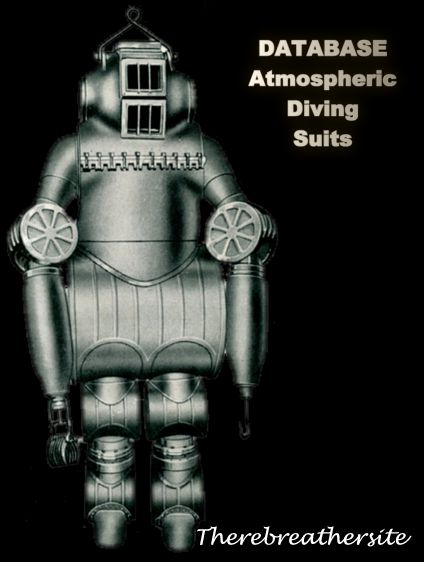
Giuseppe Restucci designed his first suit in 1904. The joints should be made watertight by means of overpressure. The patent he had in 1908 describes a more simple suit, mainly designed for salvaging small items from the seabed.
From R.H. Davis deep diving and submarine operations.
It is refreshing to turn from such efforts as that of Wichmann and Zopke to the very interesting design produced in 1904 by Giuseppe Restucci, of Naples. His specification describes two forms of dress, both showing an excellent grasp of the problems involved and providing a solution which is practicable, although somewhat too complicated. Restucci proposed to keep the joints of his suit tight by supplying them with air at a pressure slightly exceeding that of the external water, so that air is always exuding from tem slowly, while no water can enter. Yet the interior of the dress remains at atmospheric pressure; the air-supply to the joints is taken through small pipes from a suitable compressed air service, and not from the suit itself. Theoretically, this is a feasible plan, but in practise their would be difficulty alike in adjusting the pressure in the joints, in keeping constant whether the joints were flexing or motionless, and in preventing air-leaks in the service, to say nothing of the fact that the diver would either have to Carry a reserve of compressed air or have two complete twin pipes, one providing air at atmospheric pressure for the suit and the other highly compressed air for the joints. Restucci’s First design shows a complete armoured suit with articulated arms and legs with eight joints in all. The second design is of a simpler type (1908) with articulated arms only, and no power of self-locomotion. The lower portion is a simple cone enclosing the diver’s legs. The dress is intended to be hung by a cable attached to it at the back, a little above the centre of gravity. At the bottom of the cone is a dilatable bag, somewhat reminiscent of that used by Philips, but much smaller. If expanded, this causes the apparatus to tilt from a vertical position towards the horizontal. In this manner the diver retains some slight control over his movements when at the bottom. The expansion of the bag is to be effected by a small pump worked by the diver’s feet.
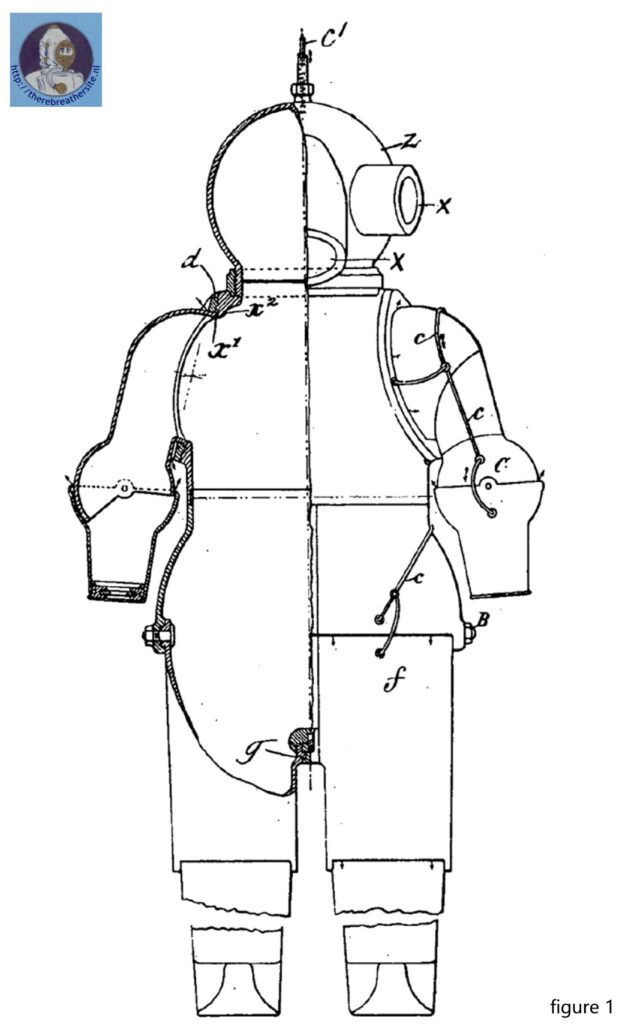
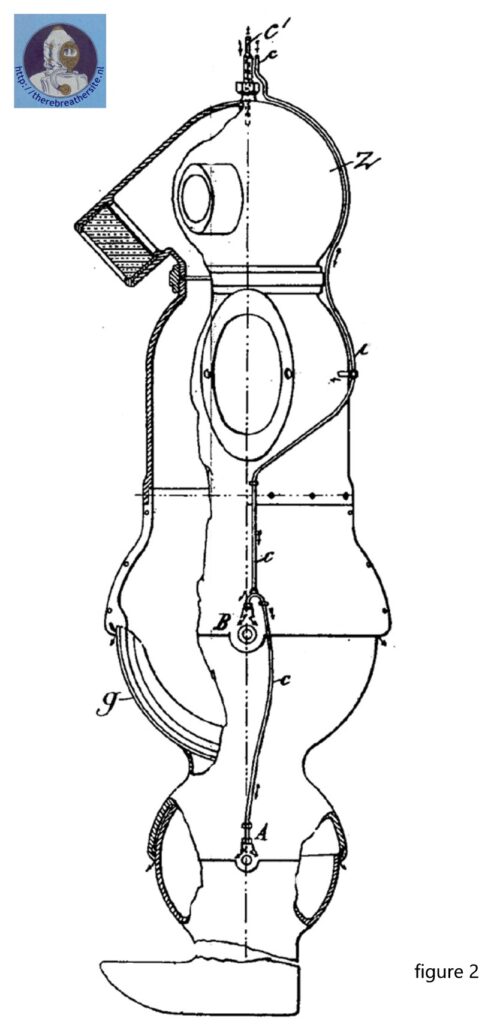
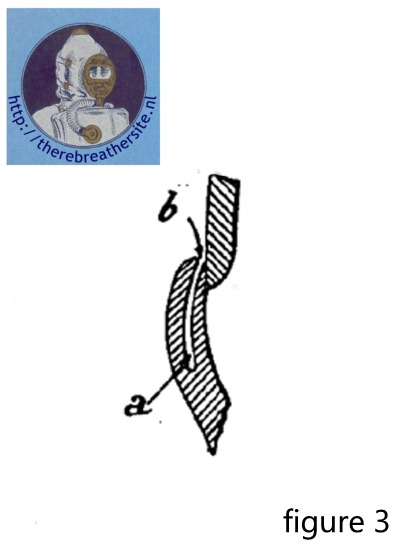
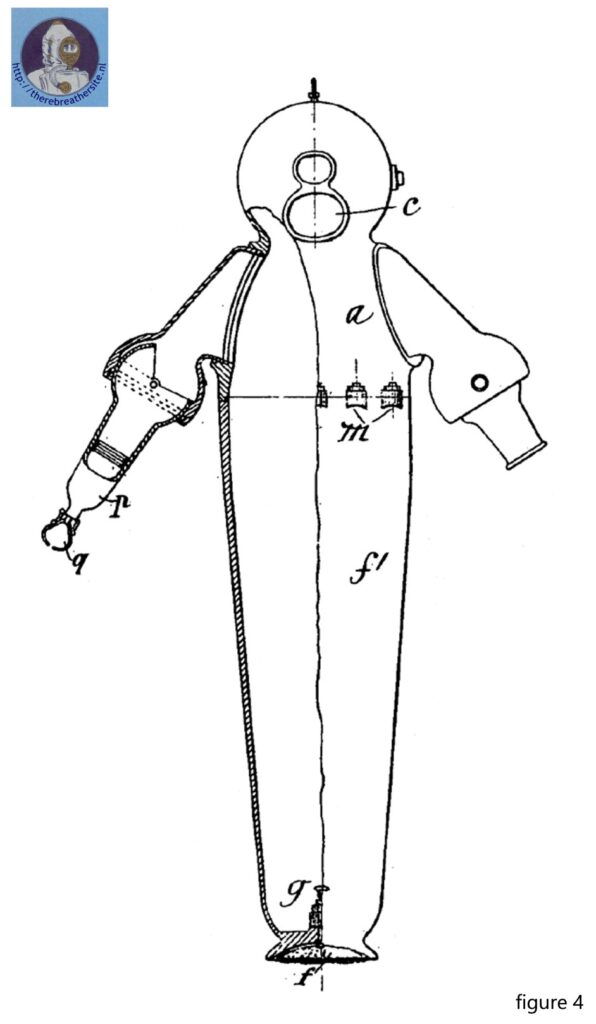
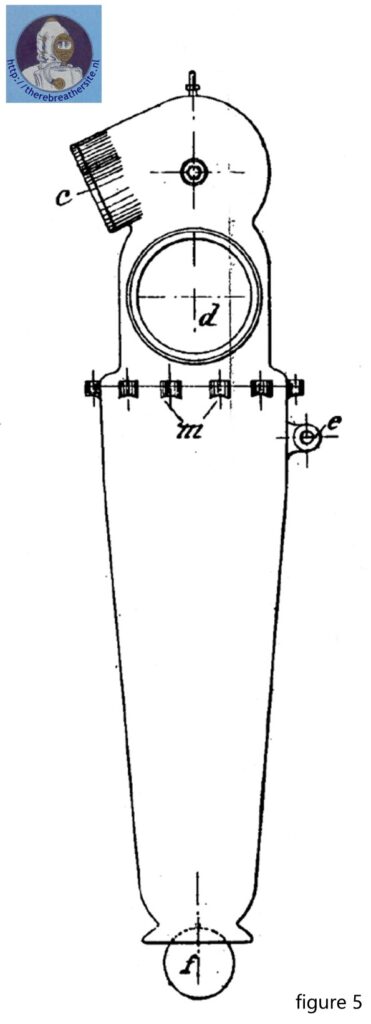
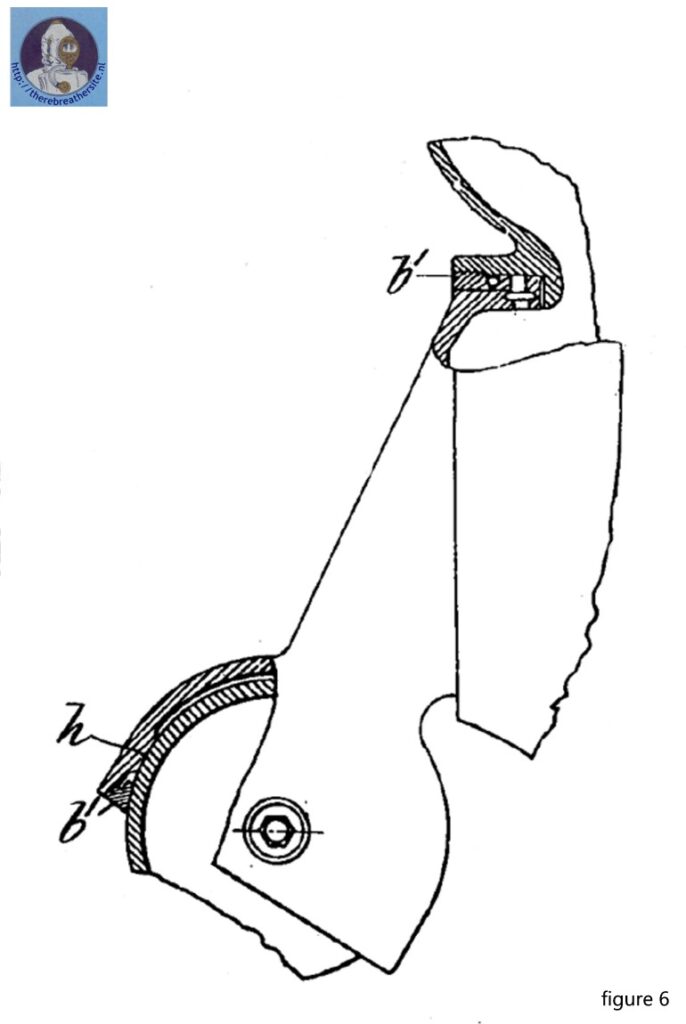
Hello Jan Willem.
I hope you are well.
I was recently looking at your website for information on the de Pluvy ADS when I was checking out the information on the ADS of Restucci. I saw that you wanted more information on the patent number for the ADS.
The patent number 29114 you gave is correct but, at the time, the UK patent numbers began again with each new year and included the year the patent was submitted to the Patent Office, so the correct number for the patent is GB190429114 You gave the year of publication 1905 which is where the confusion arrived.
You can see the full specification here:
An Improved Cuirass Diving Suit for Deep Diving
You may be interested that this patent was also published in France and Spain as:
FR358094 published in 26/1/1906: Veste-cuirass pour plongeurs
ES36913 published in 16/11/1905: Un escafandra para buzos
Two years later there was a related patent published in the UK :
GB190619771 published 27/6/1907: Improvements in or relating to Diving and Dredging apparatus:
This was more a diving chamber than an ADS and was equipped with rakes for dredging the sea-bottom
This was also patented in France and Austria:
FR382709 published 14/2/1908:
Veste-cuirasse pour plongeurs avec rateaux recueilleurs pour la peche des perles, des coraux, etc., et pour le renflouage des objets existant dans le fond de la mer
AT35405 Published 10/12/1908: Taucheranzug fur grosse Tiefen.
I hope you find this useful
If you have any other patent enquiries please let me know.
Best wishes
Richard Walsby

Therebreathersite was founded by Jan Willem Bech in 1999. After a diving career of many years, he decided to start technical diving in 1999. He immediately noticed that at that time there was almost no website that contained the history of closed breathing systems. The start for the website led to a huge collection that offered about 1,300 pages of information until 2019. In 2019, a fresh start was made with the website now freely available online for everyone. Therebreathersite is a source of information for divers, researchers, technicians and students. I hope you enjoy browsing the content!
